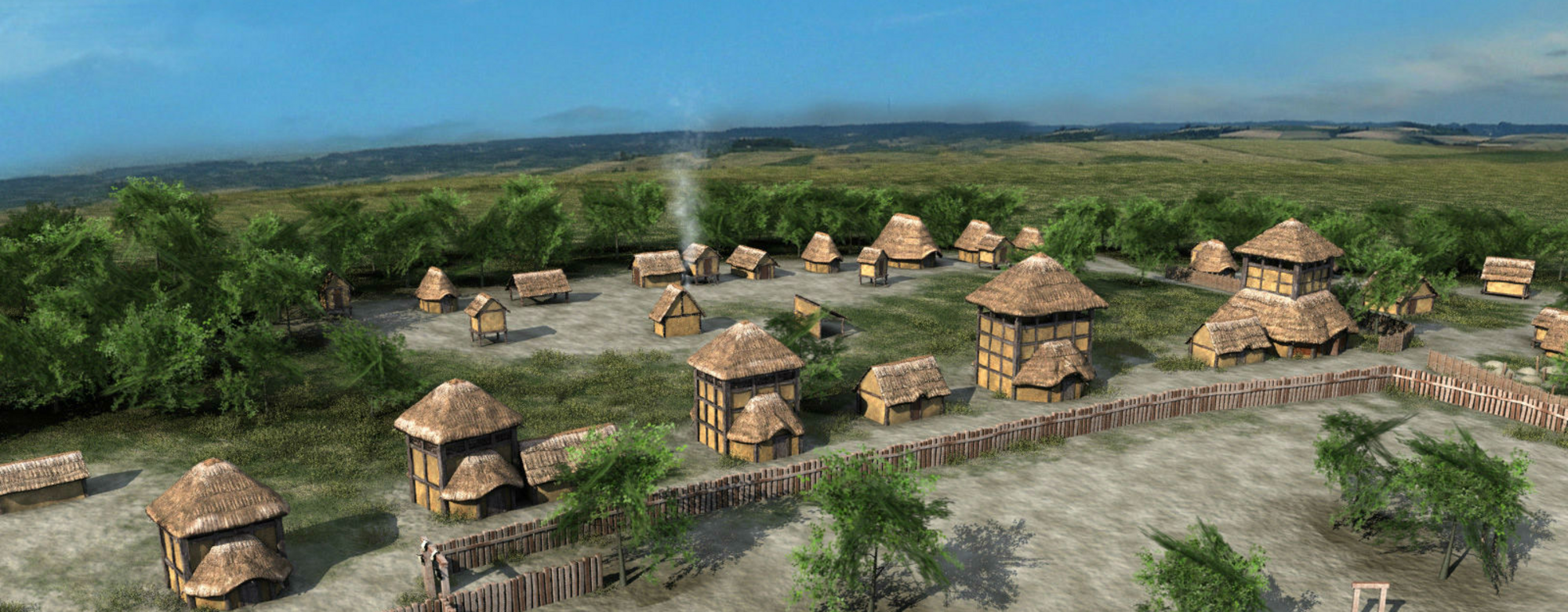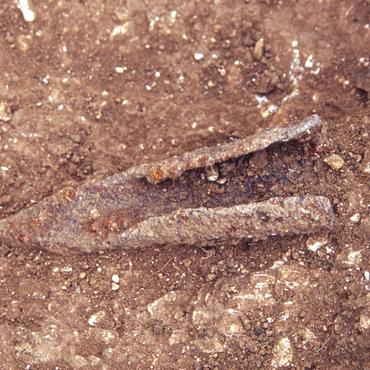
- Home
- The Gallic village
- Establishing the village
- Large scale sacrifices and burial pits
Other religious practices have also been observed at Acy-Romance.
Four examples, four quadrangular burial pits containing impressive quantities of quartered female sheep occupy an important position in the centre of the village. The composition of these deposits, the presence of foetuses, the fact that the animals were all the same age and were buried immediately, would all seem to indicate the involvement of the gods.
A completely different aspect of religious practice was revealed by the discovery of over 1500 miniature iron spear tips in the top level of a filled-in well. While the deposit of sacrificed weapons in Celtic holy places was quite common, and miniature weapons are often found in Roman temples, the dedication of countless miniature weapons is found uniquely in the northern territory of the Remi.
Mass sacrifices of ewes
Two of these burial pits are close to the central Bronze Age enclosure, two others lie fifty metres to the south. The best preserved has revealed quantities of ewe's bones (3500 from adults and 700 foetuses) and indicates what the others must have been like. This grave contains the remains of 150 subjects. These were pregnant ewes who were slaughtered, butchered and whose entrails and a few pieces were buried immediately. The foetuses indicate that the slaughter took place in late December or early January. Banquets and cuts intended for the gods seems the best interpretation for the presence of these remains and their burial. These events took place between 90 and 60 BC.
Miniature spears
In the southern part of the settlement, the crater left by the collapse of the upper walls of a Gallic well was filled with more than 1500 miniature iron spears, a few genuine ones destroyed deliberately, mixed in with 45 miniature jars, a few fibulae and coins and two fragments of a single rivet from a bronze sword sheath. This well, dug to a depth of 7.60 metres, was also used as a rubbish pit and a latrine. A few bones from two individuals, their ends gnawed by dogs, hint at the possibility that dead bodies might have been abandoned, or at religious practices we have no idea about.
Miniature weapons have been found in large quantities in two religious sites in the northern territory of the Remi: Bâalons-Bouvellemont (spear tips), Mouzon "le Flavier" (miniature shields and swords). Acy-Romance is the first site to hold so many, far more than were found at these two other sacred sites.
Acts of private worship
At Acy-Romance, public religious events, with sacrifices, banquets and the mass slaughter of ewes, were juxtaposed with the worship of a warrior god. Some buildings are identifiable as places for sacrifice and for worship. In contrast, there is evidence of private worship in certain objects placed in isolated locations and in the repeated combination of a few specific jars. Two main categories of worship can be identified. The first has a community character: blacksmiths laying down spears, animals being slaughtered by the livestock farmers for redistribution to the whole population or human and animal sacrifices in the religious quarter.
The second category would be the placing of a single tool in specific structures, like a ploughshare, an axe or a bull's skull. Each person had his own god and each god his own offerings. Farmers placing millstones in grain stores may be part of the same process or simply evidence of a propitiatory act. Here again the objects are representative of the social category where they are found.
As for the pedestal jars, they demonstrate the practice of offering libations within the family circle, in every class of the population, excluding the slaves or servants about whom we know very little. This practice is found in the form of metal pails and jars in certain graves until the early years of our era. A few sacrificial acts, also restricted to the family, are represented by the ritualised breaking of fibulae.












